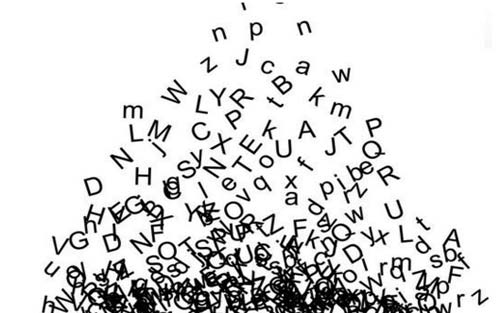动词是表示动作或状态的词,按其词义和在句子中的作用可分为行为动词,连系动词,助动词和情态动词。下面小编告诉你英语动词用法讲解,大家一起来看看吧!
英语动词用法讲解:
1.行为动词
行为动词可分为及物动词 (vt)和不及物动词(vi),及物动词表示动作或状态,有完整的词义,能单独作谓语,后跟宾语;不及物动词表示动作或状态,有完整的词义,能单独作谓语,但后面不能直接跟宾语,如要带宾语则与介词或副词构成短语。
如:
More and more people study English.(vt)
The students are listening to the teacher carefully.(vi)

2.连系动词
连系动词本身有一定的词义,但不能独立作谓语,必须与表语一起构成谓语。常用的连系动词有 be, get, turn, become, look, feel, grow, seem, sound, taste, smell等。
如:
Our country is becoming stronger and stronger.
It feels damp.
3.助动词
助动词本身无词义,不能单独作谓语,只能和主要动词一起构成谓语动词,表示否定,疑问及动词的时态、语态、人称和数等语法特征,助动词有 be,do,have,shall,will等。
如:
How do you usually come to school?
The children are playing yo-yo now.
4.情态动词
情态动词本身有一定的意义,但不能独立作谓语,只能和主要动词原形一起构成谓语,表示说话人的语气和情态。情态动词没有人称和数的变化。情态动词有 can (could),may(might),must, need, ought to, dare等。
如:
Can I help you?
- Must we go now? –No, you needn't .
a. can与be able to的用法有所区别。can只用于一般现在时和过去时,指本身有能力的“能”;be able to用于各种时态均可,指须经过努力而“能”。
b. must与have/has to的用法。must表示说话人主观认为“必须”,只用于一般现在时和一般将来时;have/has to表示客观需要,意为“不得不”,它可用于各种时态。
c.need和dare既可作情态动词也可作行为动词。
Be动词定义及用法:
一、be 动词做系动词
1、系动词+表语”的结构
当be 动词做系动词使用时,主要构成“系动词+表语”的结构,在句子中做谓语。表语可以是名词、形容词、副词、介词短语等。例如:
The man is a science teacher.
Mary's new dresses are colourful.
Mother is in the kitchen now.
I have been there before.
They shall be here at 10:00 tommorow.
That can't be true.
You are not being very polite.
Your brother is being very annoying this evening
2、be 动词的一般疑问句,方法是把be 移到主语前面,也可说成是移到句首。
Is the man a science teacher? Yes, he is. / No, he isn't.
Are Mary's new dresses colourful? Yes, they are. / No, they aren't.
Was mother in the kitchen then? Yes, she was. / No, she wasn't.
Were you at home the day before yesterday? Yes, I was. / No, I wasn't.
Was she late this morning? Yes, she was. / No, she wasn't.
3、be 动词用在特殊疑问句
在特殊疑问句里,be 动词仍然移到主语前面,但特殊疑问句是以特殊疑问词开头的,所以be 动词只能说是移到主语前面,或者说是在特殊疑问词的后面。例如:
Whose bike is broken? Xiao Ming's bike is.
Who was singing in the room? Mr. Zhang was.
Where are you from? I am from Wuhu.
What class were you in? We were in Class 2.
How old is Tom? He is ten.
4、be 动词的否定句
be 动词做谓语时,它的否定形式是在be 后加not,并且可以缩写。例如:
It is not sunny today.
Tom and his friends are not in the park.
You were not nine years old when I went to the university.
He was not often late for his class when he was a student.
I wasn't here yesterday.
My parents weren't at home last Sunday.
5、be 动词的祈使句
be 动词的祈使句有肯定和否定两种形式。肯定形式是以be 动词开头,而否定形式或强调句形,要加don't 或do。例如:
Be careful!
Be a good boy!
Don't be silly!
Don't be a fool!
Do be obedient!
Do be careful.
二、be 动词做助动词
助动词be 有两个基本用法,一是与谓语动词一起构成各种时态,二是构成被动语态。
“be + 现在分词组”成各种进行式时态。例如:
Tony's maid is washing his new car.
The children are playing in the field.
Samuel was eating when I came in.
We have been living here since 1959.
This time next day they will be sitting in the cinema.
英语没有进行时的动词用法讲解:
1.表示状态的动词一般不能用进行时
表示状态的动词不能表示正在进行的动作,因此一般不能用进行时:
We feel great joy at the good news.我们听到好消息非常高兴。
I hope you have a good time on your trip.祝你旅途愉快。
I can't think why you did it.我不懂你为何做那件事。
I don't think she'll come.(=I think she will not come.)我想她不会来了。
【注意】 think当“想”的意思讲时,可用进行时:
What are you thinking about? —I'm thinking about my lesson.你在想什么? ——我在想我的功课。
Be quiet. I'm thinking(=giving thought to a problem).安静点,我正在思考(问题)。
2.have/has当“拥有”讲时
当have/has表示相对静止的状态,也就是作“拥有”解释时,不能用进行时态:
He has plenty of money.他有很多钱。
He has a new car.他有一辆新车。
How many children have they? 他们有多少孩子?
但当have/has用作动态动词,作“吃饭、开会以及玩得愉快等”解释时,可用进行时:
You are having a good time,aren't you? 你玩得很开心,是吧?
We were having breakfast.我们正吃早餐。
3.be动词表示状态时
be动词表示状态时不用进行时:
She is in Beijing.她在北京。
Is John in? 约翰在家吗?
如不能说:
The trees are being green.
但是,be动词作“显示出某种样子”解释时,就能用于进行时,表示暂时性:
He was only being kind for the moment.他只是当时很热心。
Your son is being very annoying this evening.你儿子今晚很烦人。
He is being a fool.(=is acting foolishly)他现在表现得很愚蠢。
Are you being straight with me? 你对我讲的是实话吗?
Jane is being a good girl today.(=is behaving well)简今天表现得很好。
be动词的进行时用法主要跟用作表语的形容词的词汇意义有关。常见的此类形容词有ambitious(有雄心的),awkward(笨拙的),brave(勇敢的),careful(仔细的),careless(粗心的),clever(聪明的),cruel(残忍的),enthusiastic(热情的),extravagant(奢侈的),foolish(愚蠢的),friendly(友好的),funny(滑稽可笑的),good(好的),greedy(贪婪的),helpful(有益的),important(重要的),kind(友爱的),naughty(顽皮的),patient(耐心的),stubborn(顽固的),stupid(愚蠢的),talkative(健谈的),thoughtful(考虑周到的),witty(机智的)。
请背诵常用的现在分词:
play(游玩)—playing
study(学习)—studying
stop(停止)—stopping
cut(砍)—cutting
sit(坐)—sitting
run(跑)—running
swim(游泳)—swimming
live(住)—living
come(来)—coming
write(写)—writing
make(做)—making
take(取)—taking
arrive(到达)—arriving
drive(驾驶)—driving
move(移动)—moving
cook(烹饪)—cooking
look(看)—looking
speak(说)—speaking
动词的-ing形式用法讲解:
(1)动词的-ing形式时态
①一般式
一般式所表示的动作或状态与谓语动词所表示的动作或状态几乎同时发生或发生在谓语动词之后。
I enjoy learning English.我喜欢学英语。
My wife hates smoking.我妻了憎恨抽烟。
I saw them playing under a big tree.看见他们正在大树下玩。(同时)
Working hard,you'll be successful.努力工作你就会成功。(稍前)
We met an accident, causing the delay.我们遇到了车祸,所以晚了。(稍后)
②完成式
完成式所表示的动作发生在谓语动词所表示的动作之前。
She didn't remember having met him before. 她不记得从前见过他了。
Not having received a reply, he decided to write again. 没有收到回信,他决定再写一封。
Having finished my work, I sat down to have a rest. 完成了工作之后,我坐下来休息。
Having been there many times, I know the city very much.我去过那儿多次,所以我很了解该市。
③完成进行式
完成进行式表示其动作在谓动词之前己经开始,一直持续到谓语动词发生时为止,且有可能仍在继续的动作。
I was satisfied for his having been looking after me day and night.他日夜照料我,我很满意。
Forgive me for my having been troubling you.原谅我打扰了你。
(2)动词的-ing形式的语态
动词的-ing形式有主动和被动两种形式,主动式通常表示它的逻辑主语是其动作的执行者;被动式通常表示逻辑主语是动作的承受者时。
①主动语态
Walking in the street yesterday afternoon, he came across Mr. Smith.昨天他在大街上散步时遇到了史密斯先生。
His often coming late made his boss very angry.他经常迟到使他的老板很恼火。
②被动语态
动词的-ing形式的被动语态分为一般式和完成式两种。一般式(being done)表示一个被动动作正在进行,或与谓语动词的动作同时发生;完成式(having been done)表示一个被动动作发生在谓语动词的动作之前。
He has always insisted on his being called Dr. Turner instead of Mr. Turner.他坚持让人家叫他特纳博士而不是特纳先生。
Do you mind Jam’s being left alone at home? 让詹姆自己在家你介意吗?
While shopping, people sometimes can't help being persuaded into buying something they don't really need.买东西时,人们有时情不自禁的被说服买一些他们确实不需要的东西。
I noticed the boy being beaten by his mother.我注意到那男孩挨他母亲的打。
Having been cheated many times, she now believes in nobody. 由于多次受骗,所以她现在对任何人都不信任。
③-动词的-ing形式主动式表被动含义
a. 在形容词worth之后的动名词,用主动形式表达被动含义。
---What do you think of the book? 你认为这本书怎么样?
---Oh, excellent. It’s worth reading a second time. 奥,很好。值得再读一次。
The film is well worth reading.这部电影很值得看。
b. 在动词want, need, require后跟动名词的主动形式表达被动含义,当然这几个动词也可以跟不定式的被动形式去表达此意。二者无任何区别。
This sentence needs improving.= This sentence needs to be improved.这个句子需要改。
The room requires cleaning. =The room requires to be cleaned.房间需要打扫了。
My hair wants cutting. = My hair wants to be cut.我的头发需要理了。
与“英语动词用法讲解”相关文章
赞(0)
12
12
分享:

